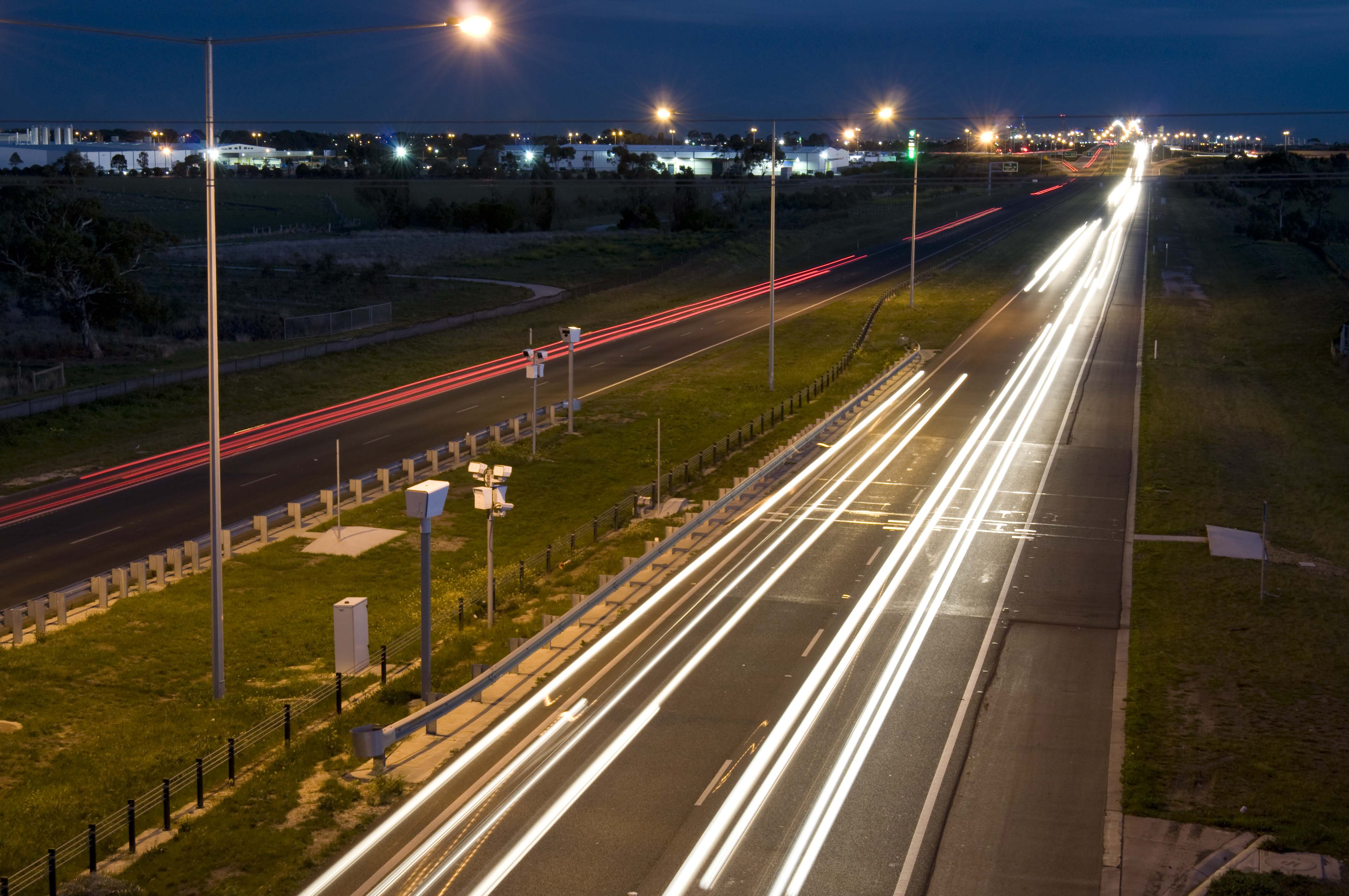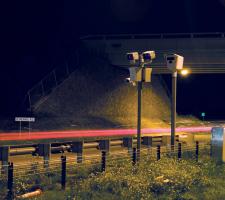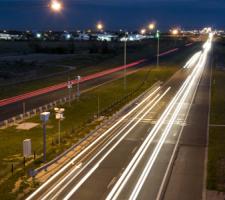
The speed enforcement system on Victoria's Hume Highway comprises of a total of 10 stations resulting in eight segments
The speed enforcement system on the Hume Highway in Australia combines both spot and point-to-point solutions. Here, Redflex's Peter Whyte discusses its implementation
The Australian State of Victoria has achieved notable success in reducing casualty rates since launching a three-pronged road accident prevention initiative in the late-1980s.
The three main areas of concentration - targeting the increased use of seatbelts, increasing the use of speed cameras, and deploying so-called 'booze buses' (vehicles fully equipped for the setting up of randomly located roadblocks and breath testing) - have resulted in a drop of around two-thirds in the annual number of fatalities on the state's roads, from a peak of just over 770 in 1989 to just 290 last year. Victoria's Government considers the initiative's coordinated approach to have been groundbreaking and it is held up globally as an example of how to achieve meaningful safety improvements.
Within the state innovation continues, particularly in the area of automated speed enforcement.
The Hume Highway, part of the Auslink National Network, runs for 880km between Sydney and Victoria's state capital, Melbourne. A vital freight link, it also serves Albury-Wodonga and the Australian capital, Canberra. The speed limit on most of its dual carriageway length is 110km/h but this reduces to 50km/h where it passes through the towns which have yet to be bypassed.
The section of the road just to the north of Melbourne was considered to be the most dangerous stretch of road in the state by the
In December 2003, the Victorian Parliament passed legislation enabling the state's police to fine motorists for exceeding the average speed over a set distance and, following a comprehensive international competitive tendering process, the DOJ awarded a contract for the provision of point-to-point detection systems to Reflex Traffic Systems.
Combining strategies
The result, says"Point-to-point was a whole new ball game when it was introduced," says Whyte. "Feedback suggests that road users don't feel unfairly caught out when overtaking or because of a slight loss of concentration.
"The decision to go for a combination of point-to-point and spot enforcement was taken by the DOJ and the Victorian Police and is proving itself to be a most effective strategy in that it has resulted in a marked reduction in levels of speeding. It has also highlighted some interesting driver behaviours. For instance, early studies showed that across all of the offences committed around 40 per cent will be spot speed-only, 40 per cent will be point-to-point-only, and only 20 per cent will be a combination of both.
"That tells us that people speed in different ways and that we need to consider different approaches to changing behaviour."
Point-to-point was implemented across an existing spot enforcement network "as a natural progression", according to Whyte. Across Australia, legislation to allow the method's use has now either been implemented or is on its way. Tasmania and South Australia are conducting trials, while New South Wales has already deployed systems.
Image capture is both front and rear to take account of different vehicle types: in Victoria, motorcycles do not have front licence plates while trucks must be captured from the front as the rear plate will pertain to the trailer and not the tractor unit.
Challenges and features
"The installation is at a point on the outskirts of Melbourne where the Hume Highway experiences some of its highest traffic volumes and incident rates. Although it sits across a quite substantial distance, there was already good infrastructure in place and so we were able to take advantage of existing power and data connections," says Whyte."Perhaps the biggest challenge we faced was ensuring that there was enough processing power. The combination of spot and point-to-point enforcement means that an image which meets all jurisdictional and legal requirements has to be captured of every vehicle passing. That also requires a major real-time optical character reading capability; in fact, the whole installation is huge by comparison with anything else anywhere in the world.
"Ensuring the quality of image captures was a challenge in itself. REDFLEX point-to-point is a full, high-resolution rather than a video system. Purpose-built high repetition-rate infrared flash systems ensure clear pictures are taken of every vehicle passing. The advantage of the system is that it catches all vehicles in inclement weather, at night and at all practicable speeds. Video image capture has lighting limitations by comparison, and video vehicle detection just can't provide adequate detection rates at night or in heavy rain. Car headlights and dawn/dusk shadowing can also be problematic. With one camera per lane, we're achieving capture rates of three vehicles per second per lane, giving a detection rate of close to 100 per cent."
Conventional in-road sensors are used as triggering devices, rather than radar or laser, in part because of the need to make use of the existing legislated technology when the point-to-point system was introduced. (Whyte notes that the recent trials of Redflex's point-to-point system in the Middle East have used laser-based detection.)
"That was a user-specified requirement," he continues. "Also, in Victoria state law dictates the need for two independent methods of speed determination. On the Hume Highway, piezo- and loop-based detectors are used.
"In-road sensors also mean a much more repeatable positional fix. Images are captured at the same point for every vehicle. Having the distances more closely defined results in better quality and accuracy."
Data-gathering capabilities
The point-to-point system also offers significant data-gathering capabilities, something which the state police force has used in the past.Whyte: "This includes retrospective trawls for evidence of criminal activities, and everything from high-profile murder cases through to more minor offences such as tracing those who have attempted to leave fuel stations without paying. The REDFLEXred-alert ANPR system also allows real-time white- or blacklisting and this has been used effectively by the local police in the past."
Information for non-criminal applications includes vehicles per day/lane as well as vehicle classification and lane usage. Traffic flow data, in the form of average and mean speeds, is also possible.
At present, there is no mobile enforcement strategy to reinforce the fixed systems already in operation. Whyte notes that mobile enforcement was a part of the original contract award, however, and that it could still follow.
"The fixed installation was, and is, considered to be ground-breaking. As a result there was a need to both exercise and exorcise the system - with a system like this, it's near-impossible, at the pre-implementation stage, to anticipate all of the challenges and issues you might come up against. Although, since implementation things have moved ahead at a great rate and I think that the installation is now at a very mature stage in all areas of enforcement, including operations, certification, evidence processing, technology and legislation."
Future development
In terms of where the system goes next, the addition of additional stations to extend the geographical reach would be a relatively simple undertaking, he says."More challenging would be what happens when and if the point-to-point system is extended to the point where it crosses the state line into New South Wales," says Whyte. "There, it is the roads authority rather than the DOJ which is responsible for speed enforcement and I can see some interesting times ahead when it comes to dealing with the cultural and data-sharing issues which would exist between the two agencies.
"Nevertheless, extension of the system is logical, as is the use of new technologies as they clear the various legislative hurdles. So, for instance, that might mean the use of non-intrusive detection, most likely radar, at some point."













